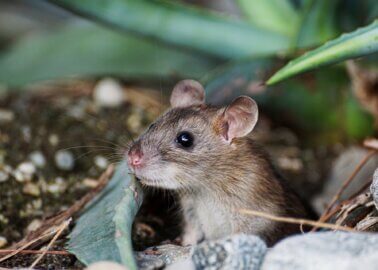Top Tips on Helping Hedgehogs This Spring
By Julia Stephenson
Hedgehog numbers have plummeted to dangerous levels in recent years, but the good news is that we can all do our bit to help them.

When I moved to the outskirts of London four years ago, near Putney Common, I was excited to discover that there were still hedgehogs living in the area. I’ve even spotted one myself.

Following the advice of Hedgehog Cabin, a busy hedgehog hospital in Hampshire run single-handedly by a wonderful woman, I bought four quality wooden hedgehog houses from Riverside Woodcraft – do avoid the cheap plastic ones you can buy in supermarkets, which don’t have enough ventilation and can cause hedgehogs to suffocate – and filled them with meadow hay. Together with the local ranger, I placed them in quiet areas off the beaten track. Every evening, I leave food about 3 feet away from the houses – placing it too close could attract predators – and top up the water dishes.
Around this time of year, hedgehogs are waking from hibernation and are desperately hungry. Before you feed hedgehogs, do your research so you can avoid foods that can make them ill. Most “hedgehog food” available for purchase is expensive, unregulated, and full of ingredients such as cereal and mealworms, which can cause agonising and terminal metabolic bone disease. And never feed hedgehogs cows’ milk! Most hedgehogs are dangerously lactose intolerant, so a saucer of milk is likely to make them ill.

Hedgehogs are nocturnal, so if you see one out in the day, he or she is probably ill or injured, and it’s vital that you take the animal to a reputable local rescue. A list of hedgehog rescues can be found here.
Occasionally, female hedgehogs may be out foraging for their young in daylight, but this only happens during the very short nights of June and July, and they will be moving purposefully.
If you have a garden, please make sure there’s a gap in any fencing so that hedgehogs can get through – they roam a large area every night, so this is important.
Remember that a “tidy” garden is unwelcoming to hedgehogs, so leave piles of old logs and leaves while keeping as much of your garden wild.
Avoid using slug pellets, as these may be harmful to hedgehogs. Contrary to popular belief, hedgehogs only eat slugs when they are starving, and doing so can give them lungworm. Their natural diet consists of caterpillars, beetles, and small insects, but sadly, the mania for pristine gardens, impregnable fencing, and Astroturf mean these they are in short supply – hence why hedgehog rescues have to cope with so many starving hedgehogs these days. This is why we need to keep some messy areas in our gardens.
Lastly, support local hedgehog rescues, and be wary of any self-styled hedgehog “experts” who pose for photos with them during the day, which is very stressful for these shy, nocturnal animals, or wire up hedgehogs in order to “monitor” them for “research”. There have been many tragic cases of hedgehogs who have been killed after becoming tangled in wires and equipment.
So, even if you live in a flat like me, there’s a huge amount you can do to save our wonderful native hedgehogs!
What Else You Can Do for Hedgehogs
Hedgehogs often become victims of cruel glue traps. Learn more about these torture devices and find out how you can help hedgehogs and other animals trapped in them:



